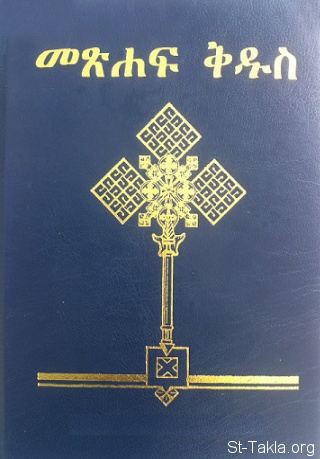Ethiopian History In Amharic Pdf Bible Commentary

“Princes shall come out of Egypt; Ethiopia shall soon stretch out her hands unto God.” - Psalm 68:31 The Bible is a multicultural book. This statement may sound controversial but archeology, history, and the text prove it to be true. In 2013 this controversy played out in the media when viewers of The Bible miniseries were upset that Samson was played by a black man. A second controversy occurred when a Fox News broadcaster confidently declared that Santa Claus and Jesus were white, yet when people researched original depictions of Saint Nicolas, they found pictures of a dark brown man. It appears that our faith has been distorted. As we celebrate Black History Month and prepare for Lent, how can uncovering the black presence in the Bible aid us in mourning against the sin of racism? One of the effects of racism is the whitewashing of history and sadly this has taken place even in our biblical studies.

The Roman Catacombs show biblical scenes painted by first- and second-century persecuted Christians, and their paintings clearly show people of color. What would Roman Christians gain from painting these characters black? What did these early Christians know and accept that seems unbelievable today?
I began to research the black presence in the Bible because, as a faith-based community organizer and person of color, I see that the younger generation is hungry for a faith that is grounded in truth, not tradition. While studying at Union Theological Seminary my Oxford-educated, Church History professor spoke of the early Black Church fathers and the Coptic Church (one of the oldest churches in the world). This information encouraged me to look deeper into the Bible and church history. Some may say we don't need to study the black presence in the Bible and that color doesn’t matter, but if this is so, why is Jesus painted with blond hair and blue eyes? Why were early pictures of black saints, biblical characters and black Madonnas destroyed? Some will say these items were destroyed to protect people from idolatry, but I would argue that this could not have been the case since they were replaced with icons and photos of white saints and Bible characters. The main reason for studying the black presence in the Bible is because if we can't accept that our Bible is a multicultural book, how can we accept multicultural churches?
The missing books of the bible were found in Ge'ez language. Based on Ethiopian orthodox Tewahedo church traditions, Ge'ez is the first original language of human being. Ethiopian Eunuch - Bible Story. It begins with an angel visiting Philip, telling him to go south from Jerusalem to Gaza. There he sees a eunuch, a court official of the Queen of Ethiopia, who had traveled to Jerusalem to worship and was returning home, seated in his chariot, reading the prophet Isaiah.
Ten cate oral histology pdf download. It is difficult to see the black presence in the Bible because you won’t read the terms black or African but you will read the terms Ethiopians, Cushites, Egyptians, Hebrews, or other tribal terms. Ethiopia is mentioned 45 times in the Bible; add this to the number of times Egypt is mentioned, and Africa is mentioned more than any other landmass in the Bible. It should also be noted that the 'Middle East,' including the Holy Land was connected to Africa until 1859 when the Suez Canal was completed and had been referred to North East Africa for the majority of modern history. From Genesis to Revelation there is a great deal of proof that blacks are present throughout the Bible: • In the Hebrew, Adam (or Ahdahm) is defined as swarthy, dusky, reddish-brown soil, dark-skinned like a shadow. Ethno world 6 voices.